Once upon a time, keen photographers bought a DSLR – it was the established order of things. But the mirror mechanism of a DSLR is complex and noisy and adds to the weight of the camera, and that's where the mirrorless camera, or compact system camera comes in. They keep the big sensors and interchangeable lenses of DSLR cameras but ditch the mirror to produce a smaller, lighter and simpler camera.
In fact, there are still pros and cons to both designs. If you want to find out more, read this: Mirrorless vs DSLR cameras: 10 key differences.
Some mirrorless cameras have a compact, rectangular body, some are styled like DSLRs with a 'pentaprism' on the top – though this houses an electronic viewfinder rather than the optical viewfinder you get with a DSLR.
Be aware, too, that cheaper mirrorless cameras don't come with viewfinders at all – instead, you compose the photo on the rear screen, just as you do with a compact camera or a smartphone. (If you're still not sure what kind of camera you need, read our easy to follow guide: What camera should I buy?)
No two photographers are exactly the same – we're all looking for slightly different things, so we've ranked the 10 best compact system cameras you can buy right now based not just on specs, handling and performance, but size, simplicity and value for money too.
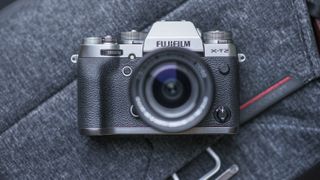
A stunning camera perfect for enthusiast photographers
Sensor size: APS-C | Resolution: 24.3MP | Viewfinder: EVF | Monitor: 3.0-inch tilt-angle display, 1,040,000 dots | Maximum continuous shooting rate: 8fps | Movies: 4K | User level: Expert
Polished handling
Fast autofocus
No touchscreen
Not much else
Fujifilm's update to the X-T1 may look similar at first glance, but there have been some big improvements and perhaps the biggest of all is the autofocus system. It's a huge leap forward compared with the system found in the X-T1, with AF tracking of moving subjects now much more precise and swift, while the level of sophistication and customisation is impressive too. Add in 8 frames per second burst shooting, a clever double-hinged rear display, bright EVF, Fuji's excellent 24.3MP X Trans III CMOS sensor and plenty of body mounted controls that's all wrapped-up in a tactile body, and you're left with one of the best cameras available today.
Read our in-depth Fujifilm X-T2 review
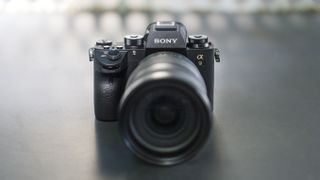
Taking the fight to Canon and Nikon
Sensor size: Full-frame | Resolution: 24.2MP | Viewfinder: EVF | Monitor: 3.0-inch tilt-angle touchscreen, 1,440,000 dots | Maximum continuous shooting rate: 20fps | Movies: 4K | User level: Expert
Blistering performance
Highly effective AF system
Limited touchscreen control
No XQD card slots
The Alpha A9 doesn't fail to impress. The AF system Sony has blessed its flagship camera with is not only incredibly quick, the tracking performance needs to be seen to be believed. Partner that with incredibly fast 20fps burst shooting, and a large and bright EVF that doesn't blackout when you're shooting, and you've got a camera that can mix it with the best that Canon and Nikon have to offer when it comes to shooting action.
Read our in-depth Sony Alpha A9 review
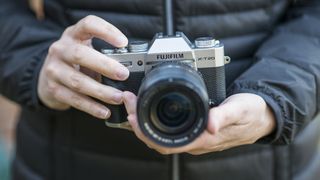
All the good bits of the X-T2 in a more affordable body
Sensor size: APS-C | Resolution: 24.3MP | Viewfinder: EVF | Monitor: 3.0-inch tilt-angle touchscreen display, 1,040,000 dots | Maximum continuous shooting rate: 8fps | Movies: 4K | User level: Beginner/intermediate
Excellent build and design
Rich and detailed images
Limited touchscreen control
EVF magnification
Like the look of the X-T2 at the top of our list, but don't quite want to shell out that much for it? Fuji has the answer in the shape of the X-T20, which manages to distill many of the key features of the X-T2 including the excellent 24.3MP sensor and advanced AF system, but into a slightly more compact and affordable camera. The X-T20 feels very similar to its bigger brother in terms of build quality, while the tactile controls and polished handling make it a very satisfying camera to shoot with. The X-T20 will certainly hit the sweet spot for many photographers.
Read our in-depth Fujifilm X-T20 review
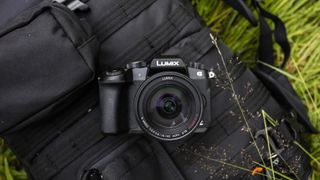
Big features squeezed into a small body
Sensor size: Micro Four Third | Resolution: 16MP | Viewfinder: EVF | Monitor: 3.0-inch display, 1,040,000 dots | Maximum continuous shooting rate: 9fps | Maximum video resolution: 4K | User level: Beginner/intermediate
Excellent EVF and touchscreen
Great 4K video
Only 16MP resolution
Interface could be better
While not quite perfect, the G80 feature set and performance make it one of the most compelling mid-range mirrorless propositions around. Autofocus is very good, whether you're using it for static or moving subjects, and processing speeds are fast, while the image stabilisation system is very effective whether you're recording stills or movies. Image quality is generally very good, with the removal of the low-pass filter making a positive difference overall, and this is matched by strong 4K video quality, with plenty of video-related options. Together with a great EVF and LCD partnership, plenty of options over customisation and a broad range of compatible lenses, the G80 is a smash on a number of levels.
Read our in-depth Panasonic Lumix G80 / G85 review
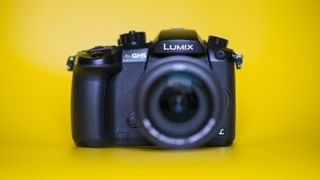
Blurring the lines between stills and movies
Sensor size: Micro Four Third | Resolution: 20.3MP | Viewfinder: EVF | Monitor: 3.2-inch display, 1,040,000 dots | Maximum continuous shooting rate: 12fps | Maximum video resolution: 4K | User level: Intermediate/expert
Brilliant video specification
Large and bright viewfinder
ISO range could be broader
Image quality not class leading
The Lumix GH5 is the latest in the line of Panasonic's top-of-the-range GH series of mirrorless cameras, which over the years have carved out a niche for themselves among videographers thanks to their breadth of movie-making features. It's certainly one of the best 4K camera solutions out there, if not the best, before you start considering dedicated professional video cameras, and that video capability is backed up by a great set of features for the stills photographer.
Read our in-depth Panasonic Lumix GH5 review
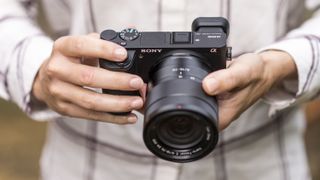
Forget any worries about slow focusing with this little beaut
Sensor size: APS-C | Resolution: 24.2MP | Viewfinder: EVF | Monitor: 3.0-inch tilt-angle touchscreen, 921,600 dots | Maximum continuous shooting rate: 11fps | Movies: 4K | User level: Intermediate/expert
Very capable autofocusing system
Excellent electronic viewfinder
No headphone port
Tilting rather than vari-angle screen
You don't have to go full-frame to get the benefit of Sony's great camera technology and this APS-C format model makes a great choice for enthusiasts looking for an alternative to big, heavy DSLR. One of the challenges for CSC manufacturers has been to make their autofocus systems as good as the ones in DSLRs. The A6500's comes very close, especially in bright light; it's able to track moving subjects around the frame and as they move towards or away from the camera. There's also an excellent electronic viewfinder that makes it easy to see when the subject is sharp and correctly exposed. Image quality is very high and there's built-in Wi-Fi and NFC connectivity to allow to share images via a connected smartphone.
Read our in-depth Sony Alpha A6500 review
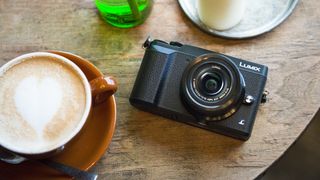
A stripped-down GX8, but its all the better for it
Sensor size: Micro Four Thirds | Resolution: 16MP | Viewfinder: EVF | Monitor: 3.0-inch tilti-angle touchscreen display, 1,040,000 dots | Maximum continuous shooting rate: 8fps | Maximum video resolution: 4K | User level: Beginner/intermediate
Great features for the price
Consistent AF performance
Ergonomics could be better
Doesn't use the latest 20MP sensor
With the GX80, Panasonic's taken the well-liked GX8 and streamlined some of the features to end-up with an appealing alternative that's more competitively priced. Despite sacrificing the clever tilting EVF, resolution is actually improved on the fixed EVF on the GX80, and while it also forgoes the 20.3MP Micro Four Thirds sensor and replaced by the older 16MP chip, the AA filter has been removed for sharper images. The GX80 also comes with 4K video capture, with the ability to capture 8MP stills from recorded footage - it's like a ultra-fast 30fps burst mode). Handling could be a bit more polished, but AF is fast and accurate, compact body and lens combination, very effective in-body anti-shake control and 4K video make this a very well-rounded camera.
Read our in-depth Panasonic Lumix GX80 review / Lumix GX85 review
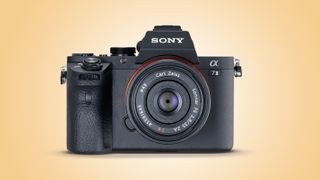
A more affordable way to go full-frame with a mirrorless system camera
Sensor size: Full-frame | Resolution: 24.3MP | Viewfinder: EVF | Monitor: 3.0-inch tilt-angle display, 1,228,800 dots | Maximum continuous shooting rate: 5fps | Movies: 1080p | User level: Intermediate/expert
High quality images
Full-frame sensor, affordable price
Needs a faster AF point settings
You'll need a second battery
With 24 million pixels the A7 may not be able to able to capture quite the same amount of detail as its high resolution sibling, the A7R II, but as it has the same sized sensor you get the same level of control over depth of field. That means you can make your sharp subject stand out from a blurred background, while the level of detail is excellent. This second-generation model benefits from a number of improvements, including 5-axis image stabilisation, an all-magnesium body and a wide selection of supported video formats.
Read our in-depth Sony Alpha A7 II review
Source: The best mirrorless cameras in the UAE for 2017
No comments:
Post a Comment